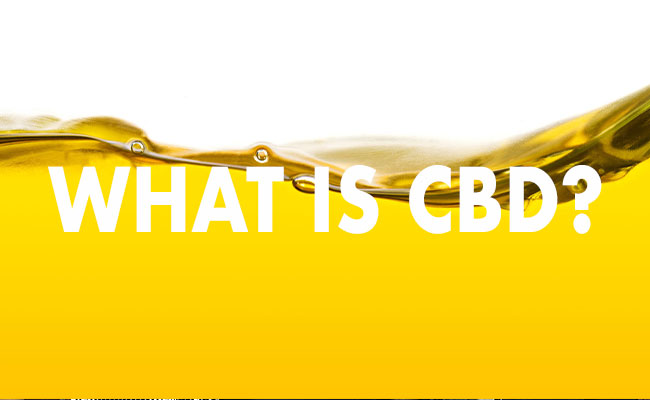
A New Way to Take CBD | A CBD Patch
WRITTEN BY GRETA JOHNSON AND DR. SWATHI
What is CBD?
Cannabidiol, also known as CBD, is one of over 100 compounds called, “cannabinoids.” CBD is a type of cannabinoid found in the cannabis plant, and is well-known for its plethora of benefits–without the intoxicating effect feeling ‘high’) often associated with consuming Δ-9-tetrahydrocannabinol (THC.)
What are transdermal patches and how do they work?
Transdermal patches are an example of a delivery form of drugs. There are a wide variety of dosage forms out there, with a few of the more conventional ones being oral (like capsules, tablets, or tinctures) and intravenous (IV). Transdermal patches are patches containing an active substance (often a drug) that is applied to and sticks to the skin. The patch then delivers the drug–in this case, CBD–via the skin and directly into the bloodstream.
Where do I put a CBD patch?
Select an area of skin that does not have open wounds, scabs, irritation, or excessive hair growth (e.g., scalp).
How do I put on a CBD patch?
A certain technique must be used while applying transdermal patches.
- Wash your hands with soap and water. Dry with a washcloth.
- Clean the intended area the patch is meant to go on with soap and water, or alcohol solution.
- Apply the patch to the skin and wear it as directed by the packaging. If appropriate, remove and apply another patch.
- Some patches can be worn in the pool or shower while others cannot. Refer to the packaging and plan to use it depending on other daily activities.
- Alternate locations where one applies the patch with use. For example, if a patch was applied on the left abdomen, the following time it could be applied on the right abdomen.
What are the benefits to transdermal patches?
- They are less invasive than many other dosage forms
- There is the option of controlled or delayed release of the active ingredient (depending on the type of patch), meaning that one patch could provide consistent relief for a long time-frame
- Applying a patch on the skin bypasses metabolism by the liver, meaning that more CBD from the patch could be absorbed into the bloodstream yielding a greater benefits
- They are easy-to-use which improves compliance (or adherence) for the user
- There are no stomach issues with transdermal systems that may occur with oral formulations
- They can have a higher amount of active ingredient(s)
- This is notable as oral ingestion of CBD is limited based on size of formulation (like capsule or tablet)
- If a patch has THC, the chance of feeling ‘high’ is very low
- Absorbing cannabinoids (like CBD or THC) via the skin does not result in high amounts systemically (in the blood)–meaning that the user will likely not be intoxicated
- They are easy to conceal or hide as they can be used under clothing on the skin (the body’s largest organ)
What are the uses of using CBD patches?
As an antioxidant, CBD is an anti-inflammatory compound that promotes a decrease in inflammation. Given that inflammation is considered the root of many conditions, scientifically it makes sense that CBD could be a tool in supporting healing and wellness. A few examples are:
- Pain management – joint or muscle pain
- Dermatology – psoriasis, dermatitis, scars
- Brain health – focus / concentration, anxious thoughts, low mood
- Sleep – increased quantity of time and quality of sleep
Who should use a CBD patch?
Due to the nature of the application of the patch in one spot, patches are a good option for those looking for relief in that one specific area. For those new to CBD, this could be a way to experiment with CBD for the first time before trying something orally or sublingually.
Who shouldn’t use a CBD patch?
Before purchasing or applying a patch, thoroughly read the ingredients to rule out any potential allergens. It is possible that people with sensitive skin may have irritation or redness near the site of application. It is important to keep in mind that CBD–even when taken in the form of a patch–may interact with medications, herbs, or supplements.
Can CBD patches show up on drug tests?
As per the 2018 Farm Bill, CBD patches that are derived from hemp can contain up to 0.3% THC. Because patches are absorbed into the bloodstream, it is possible that a patch that has any THC content could result in a positive drug test. If you have random or regular drug tests at work, refrain from using patches that are 'full-spectrum' (containing up to 0.3% THC) found in drug stores or any patches from dispensaries (likely containing more than 0.3% THC).
The bottom line
The transdermal method delivery method is an innovative way to introduce you or your loved one to CBD. Between the benefits of CBD with minimal adverse effects, CBD patches could be a great option if you’re looking for relief in one area of the body.
If you are considering using patches, speak with a medical cannabis specialist, like our Chief Scientific Officer, Dr. Swathi Varanasi–send her a message here.
References
- Crippa JA, Guimarães FS, Campos AC, Zuardi AW. Translational Investigation of the Therapeutic Potential of Cannabidiol (CBD): Toward a New Age. Front Immunol. 2018;9:2009.
- Oral Drug Delivery Technologies—a decade of developments. ASPET Journals. https://jpet.aspetjournals.org/content/jpet/370/3/529.full.pdf. Accessed June 24, 2022.
- Lyn Margetts, FRCA, Richard Sawyer, FRCA FIPP, Transdermal drug delivery: principles and opioid therapy, Continuing Education in Anaesthesia Critical Care & Pain, Volume 7, Issue 5, October 2007, Pages 171–176, https://doi.org/10.1093/bjaceaccp/mkm033. Accessed June 24, 2022.
- Mahmoudinoodezh H, Telukutla SR, Bhangu SK, Bachari A, Cavalieri F, Mantri N. The Transdermal Delivery of Therapeutic Cannabinoids. Pharmaceutics. 2022;14(2):438.
- Crippa JA, Guimarães FS, Campos AC, Zuardi AW. Translational Investigation of the Therapeutic Potential of Cannabidiol (CBD): Toward a New Age. Front Immunol. 2018;9:2009.
--
This article was written by Dr. Swathi and Elēment Apothēc Scientific Communications Intern, Greta Johnson. She is a Doctor of Pharmacy (PharmD) student at Northeastern University School of Pharmacy at the Bouvé College of Health Sciences in Boston, Massachusetts.











